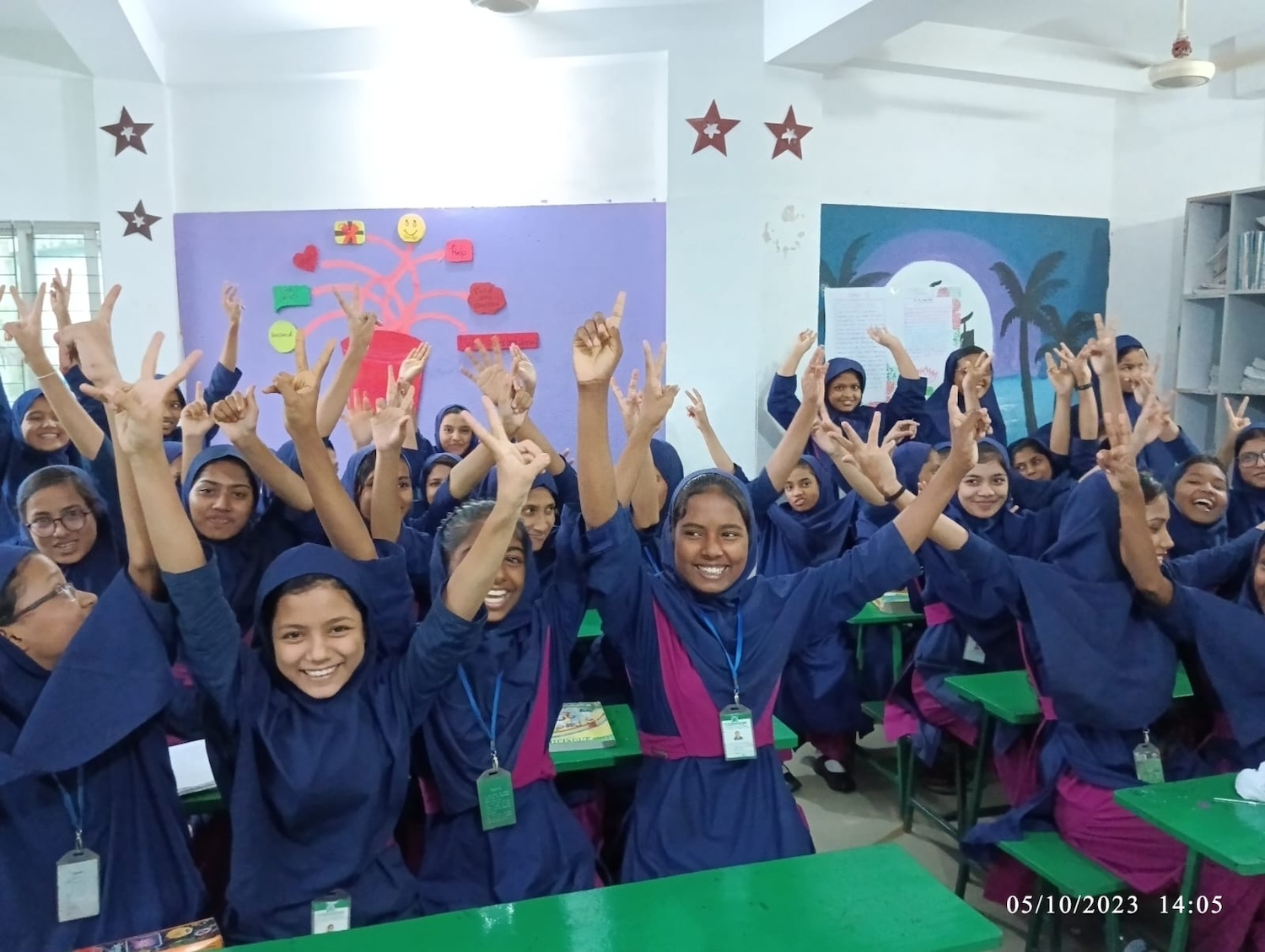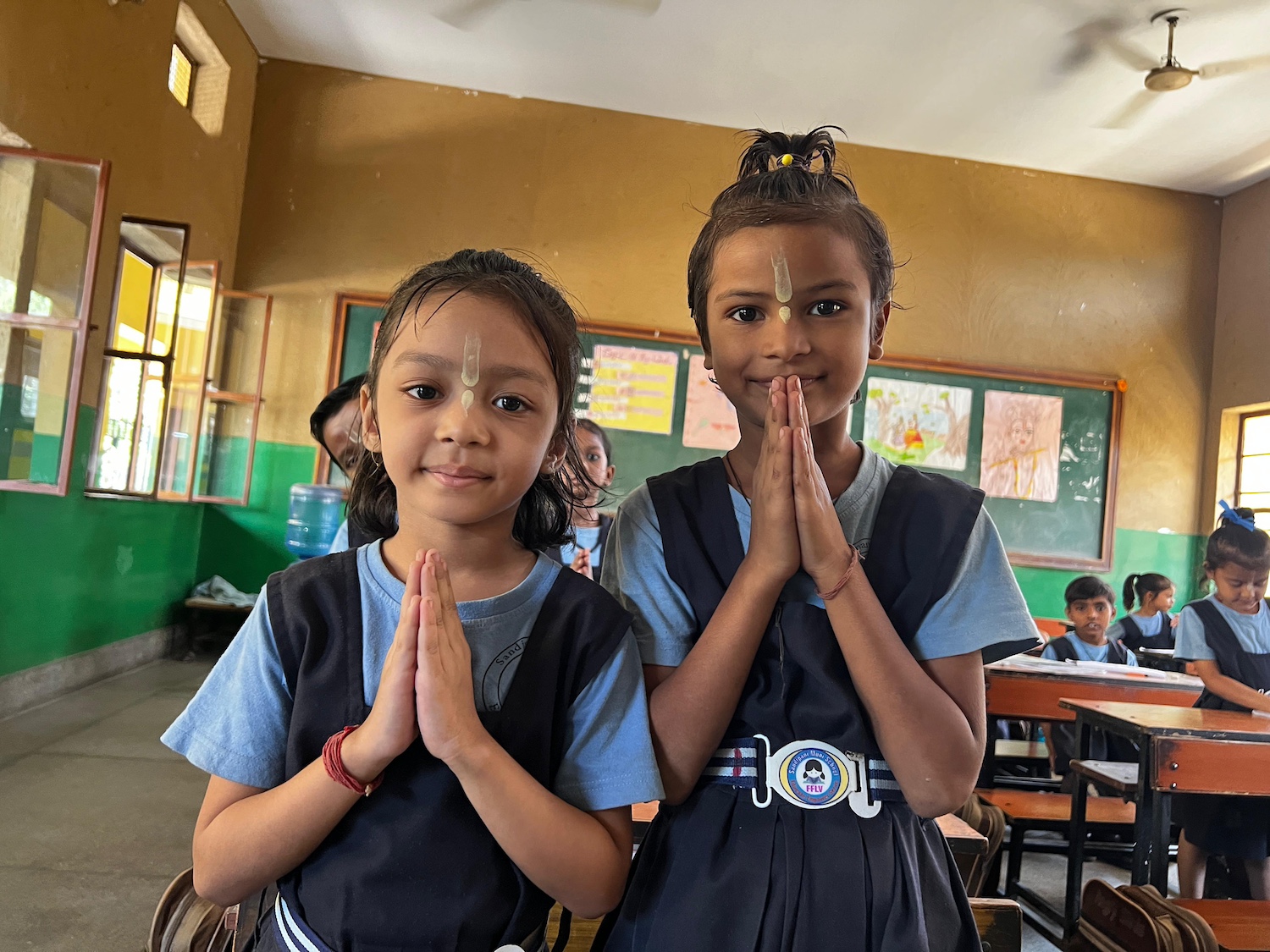
Students in a Commit2Change vedics math classroom at a partner site run by the nonprofit Food for Life Vrindavan in Vrindavan, India. (Image courtesy of Commit2Change.)
On the outskirts of Hyderabad, India, Diya lives at the Center for Social Service (CSS), a nonprofit that helps abandoned girls. Her journey there has been hard fought.
Born in a small village in Andhra Pradesh, Diya’s mother died when she was one, and she was abandoned by her father. Living at her uncle’s house she faced cruelty. At the age of eight, her uncle sent Diya to the city of Hyderabad, where her uncle told her she would be living there as a maid and babysitter to his family. He told her to behave.
Only Diya’s courage and help from a family member brought her to CSS, where she restarted her education.
October 11th is the International Day of the Girl, the annual observance of issues faced by girls worldwide. The theme this year is “vision for the future,” reflecting a hope that we can accelerate progress “towards a future in which every girl can fulfill her potential.”
But for too many girls, that future is still far out of reach. Today nearly 30 million girls are displaced and 110 million girls are at risk of child marriage. One in five girls worldwide never finish elementary school, and almost half never complete secondary education. Nearly 90 percent of adolescent girls and young women in low-income countries do not use the internet. In India alone, a staggering 29.4 million girls like Diya were orphaned or abandoned, based on UNICEF’s most recent survey.
These crises — poverty, displacement, abandonment, abuse, bias and more — are endemic to many parts of the world. They imperil our shared future, and they are putting the ambitious goals of the International Day of the Girl out of reach.
In 2010, inspired by girls we met in orphanages and residential centers across India, we started an organization designed to build that future where every girl can fulfill her potential. Commit2Change works with vulnerable, school-aged girls in India and South Asia to empower them with critical education and life skills. In 14 years, with more than 8,500 girls helped by our programs, we’ve learned two big lessons about how to make progress real for girls — lessons we hope will be instructive for global leaders, philanthropists and educators alike.
The first: You can’t give up on girls in crisis. Ever.
We believe that empowering girls through education is the key to breaking the cycle of poverty and discrimination. Many of the girls we serve come from backgrounds of extreme hardship, often cast away from their families due to poverty or gender discrimination. They face additional barriers such as domestic violence and negative family environments, which can severely impact their self-worth and ability to make independent choices.
Time and time and time again, we’ve been moved by the determination and bravery of these girls. From a young girl with HIV abandoned by her parents that Sumana met during a recent visit to the Little Flowers Children’s Home in Bangalore to the conversation Sejal’s daughters had with girls in partner orphanages, the girls we serve are fiercely determined to get educated and make something of their lives.

The second lesson: Empowerment works.
We take a holistic approach to education, going beyond traditional education to include life skills, digital literacy and mental wellness. We focus on the "4C's" — confidence, critical thinking, creativity and communication skills — which are integrated into our curricula and supported through social and emotional counseling.
This approach is meaningful for girls from troubled backgrounds. But empowerment is critical for all girls because it elevates learning. By incorporating life skills such as vedic math, digital literacy and STEM (science, technology, engineering and mathematics) education, we’re creating a next generation talent pool. This is good for girls, but it also gets us all closer to achieving multiple Sustainable Development Goals, from no poverty and equality to innovation and economic growth.
This comprehensive model starts in early education and extends through high school, ensuring that girls are empowered to complete university or vocational school and become competitive in the job market. Programming includes leading-edge tech education, from robotic kits and STEM labs to assistive technologies. In South Asia today, only one in four STEM students in college and university are women. Together, we can change that.
Fresh data shows the remarkable progress of this holistic model: a 75 percent boost in math scores across grades one through eight, and a 61 percent improvement in math scores across grades three through eight. Sixty percent of students achieved English proficiency, compared to only 25 percent locally. Students' scores jumped 15 to 30 points in math and science. And there was a remarkable 98 percent success rate in helping enrolled girls stay in school.

This model is working, and it's scalable. As more partners join on, we’ve expanded from India to the wider region, helping exponentially more girls each year who come from increasingly varied and complex situations of crisis.
By Diya’s sixteenth birthday, she’d not gone back to her village since she came into our program and refused contact with her abusive family. When you hear her story, you might not think that this young girl smiling back at you has been through so much trauma, but she is strong beyond her years. Today Diya is studying on a science track in school. Her hope is to become a doctor so that one day she can help people like her sister live a better life.
This is the lesson for International Day of the Girl. Never, ever give up on a girl in crisis. And this is our charge across sectors and across borders: provide girls with the education and empowerment they need to overcome adversity and achieve their dreams. That’s a powerful “vision for the future,” for girls and for us all.
The Commit2Change student’s name was changed to protect her privacy.

Sumana Setty and Sejal Gehani are the co-founders of Commit2Change.














